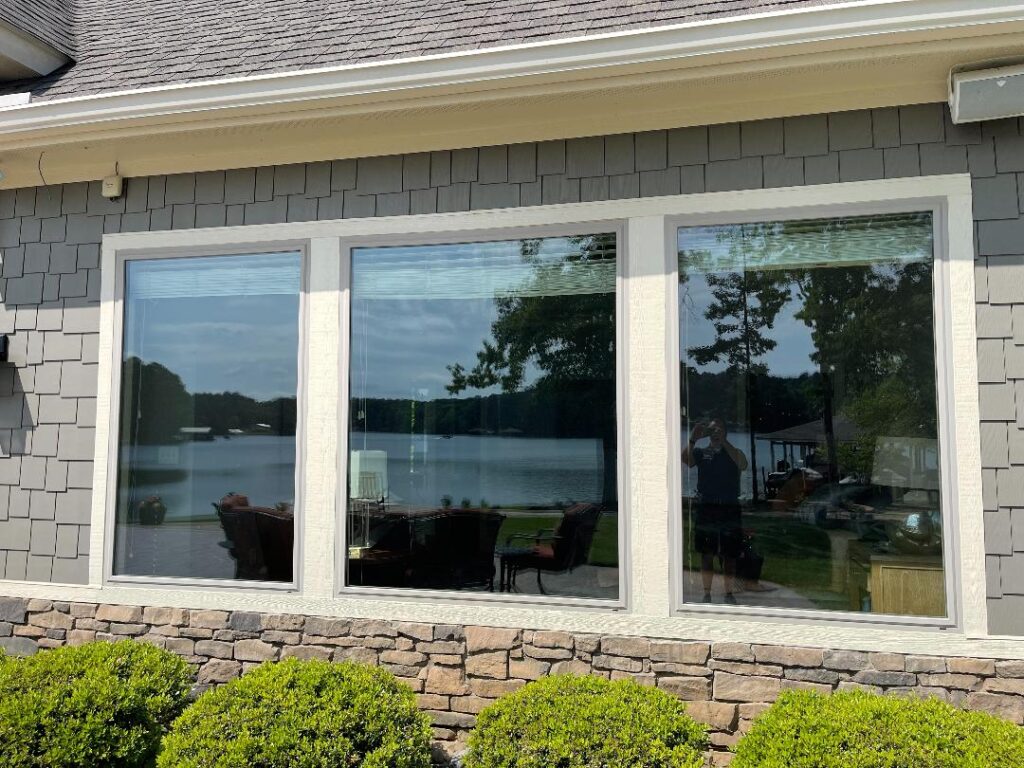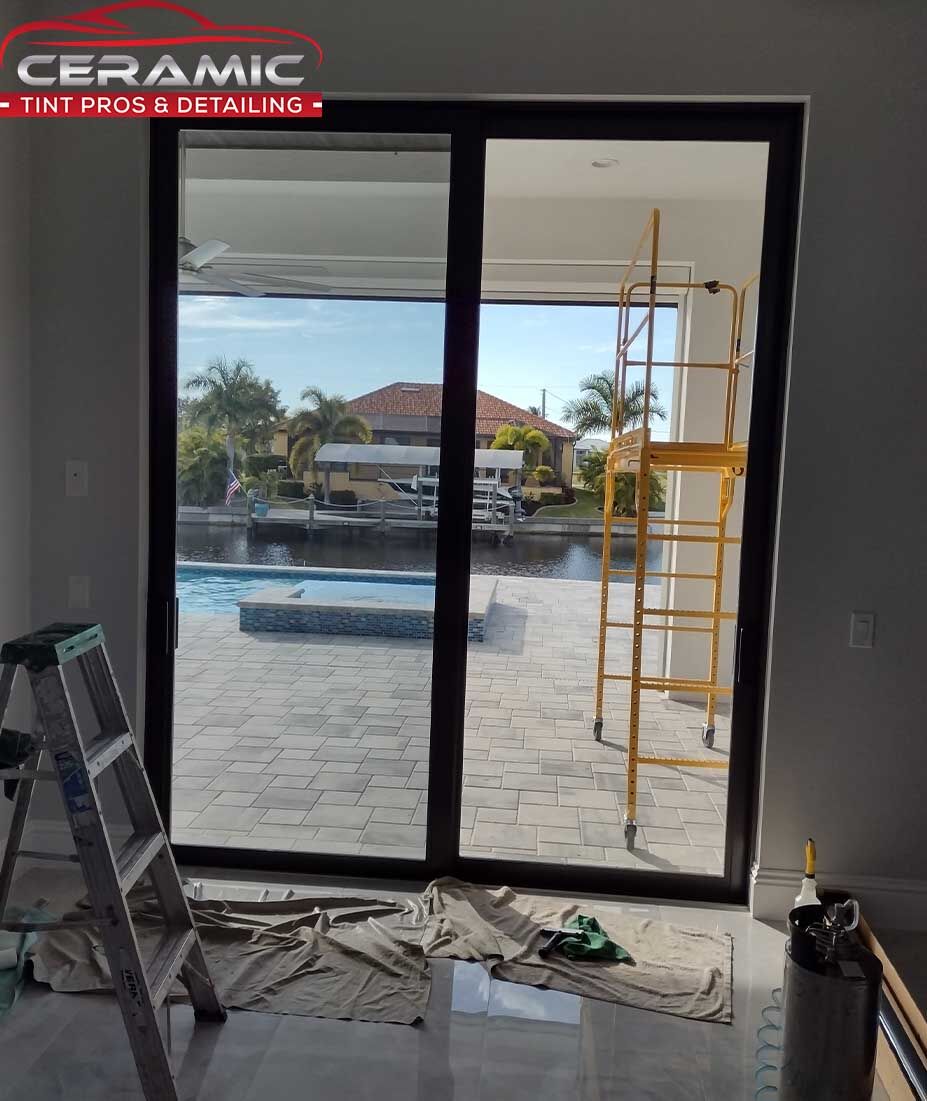How Residential Window Tinting Improves Your Home's Energy Performance
Residential home window tinting provides a compelling option for property owners looking for to enhance power performance within their living areas. By using specialized films to home windows, it effectively reduces heat transfer, thus maintaining indoor temperatures and reducing the demand for extreme heating or cooling.
Recognizing Home Window Tinting
Recognizing home window tinting is important for house owners looking for to improve both convenience and energy efficiency in their home. Residential Window Tint. Home window tinting includes the application of a slim film to the inside or exterior surface area of glass home windows. This film can considerably regulate the quantity of sunshine and warm that gets in a home, hence influencing indoor environment conditions
There are various types of home window tinting films offered, each with distinct residential or commercial properties. The performance of window tinting is usually measured by its Visible Light Transmission (VLT) percent, which suggests just how much light can pass through the film.
Benefits of Power Performance
Home window tinting not only improves looks however also plays a considerable function in enhancing energy performance within household areas. By lowering warm transfer via home windows, tinted films develop an extra secure interior climate, which can bring about significant decreases in power consumption for home heating and air conditioning. This energy performance translates into reduced energy costs, giving homeowners with significant lasting savings.

In addition, home window tinting enhances the convenience of living rooms. By reducing glow and obstructing dangerous UV rays, tinted windows produce a more enjoyable environment, which can lead to boosted wellness for passengers. The defense versus UV rays also assists preserve furnishings and flooring from fading, adding to the long life of home products.
Exactly How Tinting Functions
Tinting movies run through a combination of sophisticated materials and modern technologies created to control the quantity of solar power going into a home. Mostly made up of polyester, these movies usually incorporate metallic or ceramic particles that soak up and mirror warm. This dual capacity enables them to considerably minimize the penetration of ultraviolet (UV) rays and infrared radiation while permitting visible light to travel through.
The performance of home window tinting is determined by its solar heat gain coefficient (SHGC), which suggests just how much solar power is sent through the home window. Reduced SHGC worths are more effective as they represent higher heat denial. Furthermore, window tints can include a selection of this content shades, permitting house owners to tailor their aesthetic preferences while enhancing energy efficiency.
Moreover, these movies serve as a barrier, avoiding warm loss throughout chillier months by showing indoor warmth back into the space. This thermal insulation result matches the air conditioning benefits acquired during warmer months, adding to a well balanced interior climate year-round. By managing solar power properly, domestic window tinting not only enhances convenience but likewise plays an important role in lowering energy intake and reducing energy expenses.
Choosing the Right Color

There are various types of home window movies available, consisting of dyed, metalized, and ceramic. Colored films are affordable yet may have limited durability. basics Metalized movies use better heat being rejected however can disrupt digital signals. Ceramic films give exceptional heat control without jeopardizing exposure and are very sturdy, making them a prominent choice.
Visible light transmission (VLT) is one more important aspect, as it suggests the quantity of all-natural light that can travel through the tinted glass. Home owners need to choose a tint with a VLT that complements their lighting choices while still offering sufficient glow reduction.
Additionally, examining click for more the solar heat gain coefficient (SHGC) can assist determine exactly how well a tint can block heat from sunlight. A lower SHGC indicates better heat control, inevitably enhancing energy performance.
Setup and Upkeep Tips
Appropriate installation and upkeep are crucial elements in optimizing the advantages of property home window tinting. Professionals also make use of specialized techniques and devices, which can improve the durability and effectiveness of the color.
Following setup, upkeep is necessary to lengthen the life of the window movie. It is advised to wait at least 30 days prior to cleansing the colored home windows to allow the glue to heal completely.
In addition, regular inspections are valuable. Look for any kind of peeling or bubbling, which could show incorrect setup or wear in time - Residential Window Tint. Resolving these problems promptly can protect against more damages and maintain power performance. By adhering to these installment and upkeep ideas, house owners can ensure their window tinting remains to provide substantial energy financial savings and convenience for several years to come.
Verdict
In verdict, domestic home window tinting serves as an effective option for improving power effectiveness within homes. By lowering warm transfer and obstructing unsafe UV rays, home window films add to lower power consumption and boosted indoor comfort.
Home window tinting includes the application of a slim film to the interior or outside surface area of glass home windows. By decreasing heat transfer through home windows, colored movies develop an extra secure interior environment, which can lead to substantial decreases in power consumption for heating and air conditioning.The efficiency of window tinting is measured by its solar heat gain coefficient (SHGC), which suggests exactly how much solar power is sent through the window. By managing solar power efficiently, residential window tinting not only improves comfort but likewise plays a vital function in reducing energy intake and reducing energy bills.
By decreasing warm transfer and obstructing damaging UV rays, home window films add to lower power usage and boosted interior convenience.